#Tat tvam asi
Text

“Campbell’s sojourn inevitably took him to the Perennial Philosophy. The sublime theme he found in the ancient Hindu and Chinese pundits, Sufi and Christian mystics, poets and philosophers from Walt Whitman to Aldous Huxley, was that deep within the human soul is a mirror of divine Reality. As above, so below. Tat tvam asi: Thou art that. The Kingdom of God is within us, here and now. Awakening to that mystical dimension where the very essence of the self is suddenly perceived to be one with the ultimate forces of nature is at once the secret and the transforming journey of human life. “You are that mystery which you are seeking to know,” Campbell concluded. This spiritual perspective, Campbell believed, is not only timeless but universal. He had as great a respect for the wisdom lore of the shamans and sages of antiquity as he did for the creative visions of contemporary artists and scientists. Accordingly, like many other perennial philosophers, Campbell had very little patience, if not disdain, for any individual or chosen people mythologies that excluded others from divine revelation or claimed to possess exclusive knowledge of what he vigorously thought to be the fundamental truths, the sacred constants, of all people. “Every people is a chosen people,” he insisted. Every deity is a metaphor, a mask, for the ultimate mystery ground, the transcendent energy source of the universe, that is also the mysterious source of your own life—and everyone else’s.”
― The Hero’s Journey: Joseph Campbell on His Life & Work
#Joseph Campbell#The Hero’s Journey#Perennial Philosophy#Tat Tvam Asi#Atman#Human Soul#Awakening#Mystery
2 notes
·
View notes
Text
The proud person always wants to do the right thing, the great thing. But because he wants to do it in his own strength, he is fighting not with man, but with God.
Søren Kierkegaard, Source Unlisted.
#philosophy tumblr#philoblr#danish philosophy#philosopher#kierkegaard#existentialism#religion#tat tvam asi#human condition#the absolute#divine#free will#dark academia#life quotes
28 notes
·
View notes
Text

when there is one million of these flowers, then you can go back to the beautiful star that is your home!
#watching my liberation notes#and reading gita#so ofc im thinking of my mister 24/7#this ost. yes.#listen people‚ all we need to do on earth is love love love#without hate and without expecting anything in return#we will be able to go back to our home then!#tat tvam asi#asma talks#kdrama#asmaedits
2 notes
·
View notes
Text

Keiner kommt nach Al-Gahim
Da ist ein großer Unterschied zwischen der Mentalität dieses Blogs und dem Koran. Hier (beim keinjournalisten) heißt es* तत् त्वम् असि (Tat Tvam Asi; "Das bist du") und dort (im Koran Sure 9; Aya 179) "[...] viele Ginn und Menschen [sind] erschaffen, deren Ende Gahannam sein wird! [...]".
Also um es nocheinmal deutlich zu machen, der ungeübte Muslim vergeht sich an der (höchsten) Ethik (des keinjournalisten), indem er behauptet, er sei nicht jene, welche in der Hölle landen.
Aber doch Muslim! Du bist all jene, die in die Hölle kommen. Es gibt hierbei bloß eine Frage, welche den Muslim beschäftigen sollte; und zwar:
Wegen mir?
An vielen Stellen im Koran wird deutlich, wieviel tiefer er die Seele eines Lesers zu verbessern sucht. Eine davon könnte die Erwähnung von Al-Gahim sein. Durch das wiederholte Erwähnen (von den Bewohnern Gahannams) bildet sich im Leser Empathie. Er beginn aufzuschrecken, ja, aufzuwachen. "Was?! Meinen Mitmenschen wird so etwas angetan?! Den Dschinn, die ich liebe?!" Und somit gelangt der gekonnte Muslim an die Macht der Errettung. Ja, er wird zum Erlöser seiner selbst und akzeptiert es nicht, die (seinen) Mitwesen so einem strafenden Gott zu überlassen. Schlussendlich kann man doch - entgegen der eingangs vorgetäuschten Differenz - eine Brücke zwischen dem Koran und dem Tat Tvam Asi (तत् त्वम् असि) bauen. Wer diesen Zusammenhang zu begreifen wagt, hat womöglich sogar Gott gedient.
*Siehe die Überschrift von dem Tumblr-Blog > keinjournalist:

Bild: Mark Lague
Text: keinjournalist
0 notes
Text
A TALK SHOW ON VEDANTA
I had a blissful time by presenting a brief introduction on Upanishads (#Vedanta) in a club house at Bangalore City in India
It was an awesome event with all aspirants to know about the Highest knowledge.
View On WordPress
#"Tat-Tvam-Asi"#Absolute Nature of Brahman#Advaita Vedanta#Atman is Brahman#awaking state#Awareness#Biology of Belief#Brahmananda Valli#Causal Body#Death#Deep sleep#DRIG-DRISHYA VIVEKA#Five Sheaths#Four Maha Vakyas
1 note
·
View note
Text
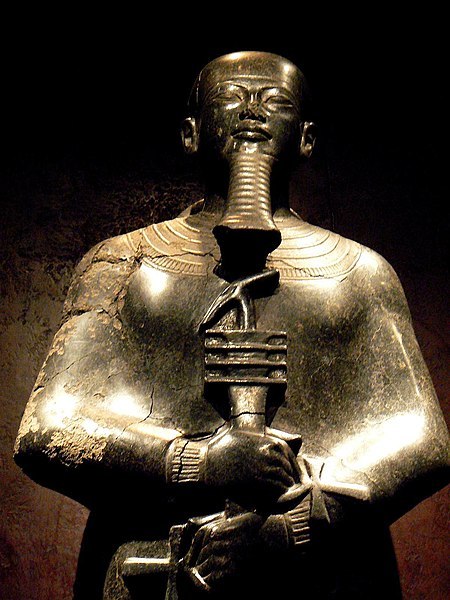
The Upanishadic Mahavaakyam “Thatwamasi” is traditionally translated into English as “Thou Art That” or “You Are That”. This is a dissenting note from my side to that interpretation. My view is that the correct translation should have been as “That Is You”. Read on.
“That Twam Asi” literally means “That Art You” or “That Is You”. Sanskrit word “That” remains the same in English, “Asi” becomes “Is” and “Tvam” is translated into “You”. Fair enough.
Tat Tvam Asi, is one of the Mahavakyas in Vedantic Sanatana Dharma. The origin of this sentence can be traced to the Chandogya Upanishad to the dialogue between Uddalaka and his son Svetaketu. The meaning of this saying is traditionally given as :
“The Self- in its original, pure, primordial state – is wholly or partially identifiable or identical with the Ultimate Reality that is the ground and origin of all phenomena.”
My disagreement is with this interpretation. My understanding is:
“The Ultimate Reality is Me. ‘THAT’, the Ultimate Reality is Me. I am the ground and origin of the Ultimate Reality. Everything comes into Being, Exists and Perishes With Me”
Let me explain:
From the moment I start experiencing the reality outside me, just as the dreamer experience the dream, I understand and interpret what we call the Ultimate Reality. When I don’t experience it, the ultimate reality doesn’t exist for me.
Therefore, “That (The Ultimate Reality) is Me”
--------------------------------------------------------------------
source: timesofindia.indiatimes.com/readersblog/warriersviews/thatwamasi-you-are-that-39179/
youtube
1 note
·
View note
Text
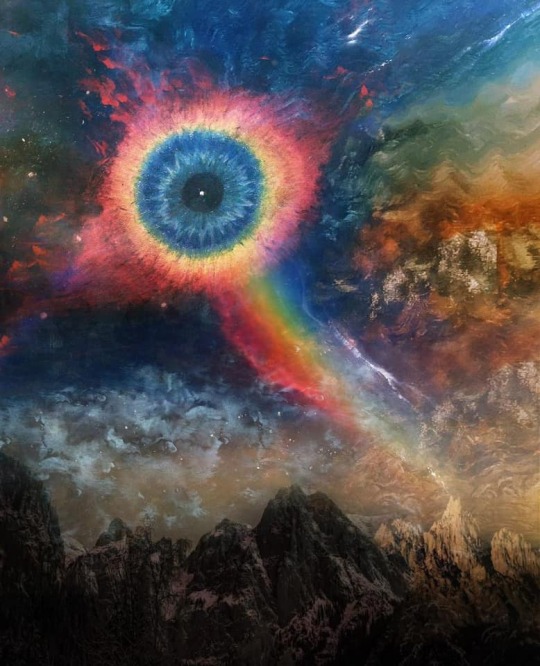
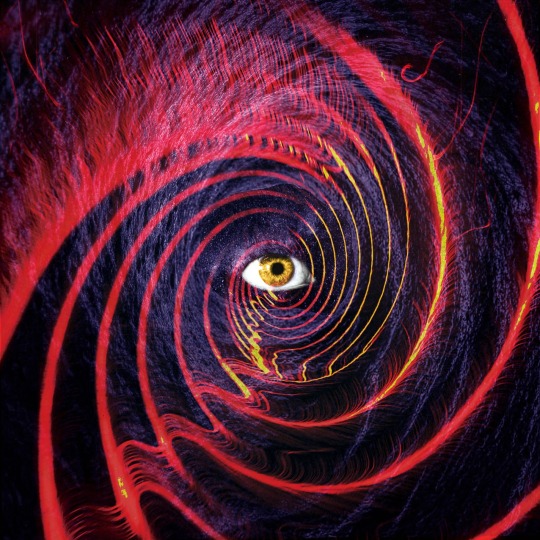
The eye through which I see God is the same eye through which God sees me; my eye and God's eye are one eye, one seeing, one knowing, one love.
--Meister Eckhart
'Tat Tvam Asi'
Gnostic Eye 🌀
by Talon Abraxas
179 notes
·
View notes
Text
This life of yours which you are living is not merely a piece of this entire existence, but in a certain sense the whole; only this whole is so constituted that it can not be surveyed in one single glance. This, as we know, is what the Brahmins express in that sacred, mystic formula which is yet really so simple and so clear; tat tvam asi, "all this is you." Vedanta teaches that consciousness is singular, all happenings are played out in one universal consciousness and there is no multiplicity of selves.
Erwin Schrödinger
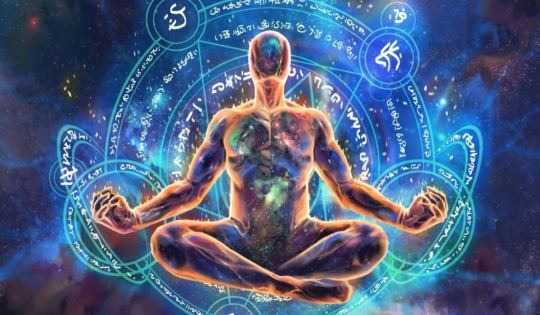
46 notes
·
View notes
Text
• Prajnānam Brahma : divine consciousness is the supreme reality (brahman) (aitareya : 5.3)
• Aham Brahmāsmi : I am brahman ( brihadāranyaka : 1.4.10)
• Tat tvam asi : you are that (brahman) (chāndogya: 6.8.7)
• Ayam ātmā Brahma : this indwelling self is brahman ( Māndukya :2)
53 notes
·
View notes
Text
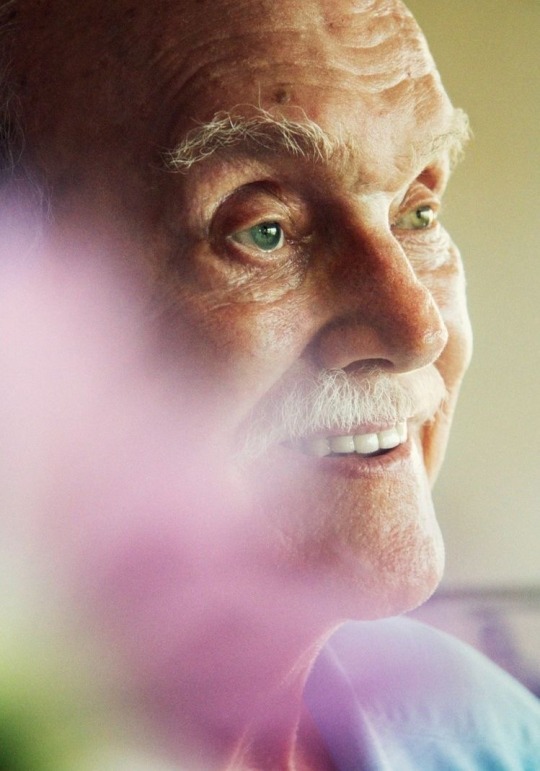
Question: You say every life situation is a perfect lesson. How is that so?
Ram Dass: The universe is made up of experiences that are designed to burn out our reactivity, which is our attachment, our clinging, to pain, to pleasure, to fear, to all of it. And as long as there are places where we’re vulnerable, the universe will find ways to confront us with them. That’s the way the dance is designed.
In truth, there are millions and millions of stimuli that we are not even noticing, that go by, in every plane of existence, all the time. The reason we don’t notice or react to them is because we have no attachment to them. They don’t stir our desire system. Our desires affect our perception. Each of us is living in our own universe, created out of our projected attachments. That’s what we mean when we say, “You create your own universe.”We are creating that universe because of our attachments, which can also be avoidances and fears.
As we develop spiritually and see how it all is, more and more we keep consuming and neutralizing our own reactivity. Each time we see ourselves reacting we’re saying, “Right, and this situation too, and this one too, Tat Tvam Asi, and that also, and that also, and that also.” Gradually the attachments start to lose their pull and to fall away. We get so that we’re perfectly willing to do whatever we do – and to do it perfectly and without attachment. It’s like Mahatma Gandhi gets put in jail and they give him a lice-infested uniform and tell him to clean the latrines, and it’s a whole mess. And he walks up to the head of the guards and he says, in total truth, “Thank you.” He’s not putting them on or up-leveling them. He’s saying, “There’s a teaching here, and I’m getting it; thank you.” What’s bizarre is that we get to the point where somebody lays a heavy trip on us and we get caught, and then we see through our caughtness and we say, “Thank you.” We may not say it aloud because it’s too cute. But we feel, Thank you. People come up and are violent or angry or write nasty letters or whatever they do to express their frustration or anger or competition, and all I can say is thanks.
– Ram Dass, Grist for the Mill: Awakening to Oneness
22 notes
·
View notes
Text

“ In this world of many, he who sees the one, in this ever- changing world, he who sees him who never changes, as the soul of his own soul, as his own self, he is free, he is blessed, he has reached the goal.” Therefore know that thou art He; thou art the God of this universe, “Tat Tvam Asi “ (That thou art).
Swami Vivekananda
#enlightenment#self realization#higher self#cosmic consciousness#divine wisdom#sungod#regeneration#rebirth#resurrection#iluminación#higher consciousness#higher frequency
6 notes
·
View notes
Text

C. R. Pattabhi Raman was a minister at the Center. He was the son of Sir C.P. Ramaswami Aiyar, who was Dewan of Travancore.
My first meeting with Ramana Maharshi was in the early 1930s when I returned from England after my studies. I accompanied the young Maharaja of Travancore to Tiruvannamalai. The Maharshi was the same serene blissful self with a friendly and kindly look on his face. When the Maharaja asked him what the first step was for atma vichara, he said that the very fact that he had come to Tiruvannamalai was the first step for him.
The next important occasion when I went to Tiruvannamalai was a few days before the Maharshi’s bodily demise. I accompanied my father, Dr. C.P. Ramaswami Aiyar, along with a friend. We were taken to the sage, who had been operated upon for a carcinomatous growth on his left arm. Apart from a few beads of perspiration on his forehead, there was nothing on his face to show that he was ill or suffering from pain. He proved beyond doubt that pain or sorrow did not affect a realized soul. A leading civil surgeon from Vellore expressed great surprise that the sage did not even want anesthesia for the operation and yet was able to stand the pain and the shock. Ramana Maharshi spoke a few words to my father and we took leave.
As we were getting ready for dinner, my father said to me that he did not want food and would have some milk. At that very moment, an attendant ran to us with a message from the Maharshi, “The elderly person will say he will only have milk. Let him eat some fruits also.” It was miraculous because the Maharshi was nearly half a furlong away and could not have heard what my father was saying.
The Maharshi was unique in many respects. Like Dattatreya of the Puranas, he did not have a guru as such. One could see on his facial expressions of joy when recitations from the Vedas and Upanishads were taking place in the Ashram. His path of knowledge was not rigid or exclusive.
Sri Ramana did not seek to establish any new cult but showed the direct way to Self-realisation. He taught as a jivanmukta (liberated soul), exemplifying Tat tvam asi (‘Thou art That’ of the Chhandogya Upanishad). Like Suka of the Bhagavatam, he was characterized by samatva (sameness in joy and sorrow and freedom from duality).
He frequently referred to verses from the Yoga Vashista wherein the Sage Vashista advised the young Sri Rama to fulfill his mission as avatara Purusha, all the while abiding in the Self. The ideal of Self-realisation is not visionary but is the very goal of life. Unswerving abidance in the Self, the one eternal Truth, whatever one may be doing, is well described in the Yoga Vashista: Firmly established in the vision that shines forth/ On the renunciation of all desires, and rooted/ In your own Being as a jivanmukta / Act playfully in the world, Oh Raghava.
To have seen the Maharshi in flesh and blood and have heard his word is our great fortune and most treasured memory.
- Face to Face
3 notes
·
View notes
Text
The God is thus within the worshipper as well as without.
Joseph J. Campbell, A Hero With A Thousand Faces: Atonement With The Father.
#philosophy tumblr#mythology#philosopher#writersociety#writerblr#joseph campbell#theosophy#God#a hero with a thousand faces#tat tvam asi#dark academia#life quotes
4 notes
·
View notes
Text
The Five Secrets of the Sweetspot is a topic that I cover in my book Secrets of Meditation. My post-meditation ritual includes me drifting my awareness to five personal expressions of the universe that I would like more of in my life:
✅ Patience
✅ Acceptance
✅ Defenselessness
✅ Compassion
✅ Abundance
I repeat each one over and over for about a minute and then drift to the next. Each of these expressions also provides the perfect closure to my morning meditation practice and helps me to evolve my transition into my time off of the meditation cushion.
For the next few weeks, each Friday I’ll cover a different “secret” of the Sweetspot. Today, let’s look at Defenseless.
Defenselessness is the state of universality when there is no need or urge to defend or promote yourself. When you are defenseless, nothing can be taken personally because there is no person or ego to defend.
Being defenseless is not about being weak, and it’s not a state that can only be experienced in meditation. It’s about trusting so completely that you realize ‘tat tvam asi’ - “you are that” - every face you see is a reflection of yours and everything you see is an expression of you. You are simply the witness to all things coming and going.
Ask yourself if you’ve been defending in your life lately. If so, what are you defending? Why are you defending? Isn’t this just a way for us to publicly or privately display our strength or power? Or to disguise our fear, our weaknesses, or our insecurities?
When we defend, it’s our chance to exhibit our knowledge of things we think we know or show our grasp of some information. And in most cases, it makes us even more rigid in our opinion.
As the Buddhist nun Pema Chodron teaches, “the truth you believe and cling to makes you unavailable to hear anything new.”
Take this concept of defenselessness into your weekend with you. Let me know your insights in the comments below!
I’ll be back next Friday as we dive deeper into Compassion. 🙏
Davidji
5 notes
·
View notes
Text

“This life of yours which you are living is not merely a piece of the entire existence, but is in a certain sense the whole; only this whole is not so constituted that it can be surveyed in one single glance. This, as we know, is what the Brahmins express in that sacred, mystic formula which is yet really so simple and so clear: Tat tvam asi, this is you. Or, again, in such words as 'I am in the east and in the west, I am below and above, I am this whole world'.”
― Erwin Schrödinger
[ Art - “Find Yourself” by Jolene Casko ]
130 notes
·
View notes
Text
The message of Vedanta is very simple: take everything that makes up existence as one single totality—the universe and all phenomena that constitute it, whatever infinitely subtler order laws or harmonies or "intelligence" or creative principles give rise to the universe and all other universes that have been or will be—take all of this together as an undivided wholeness, and what can be said about it? Nothing whatsoever, except…Tat Tvam Asi, Thou Art That.
14 notes
·
View notes